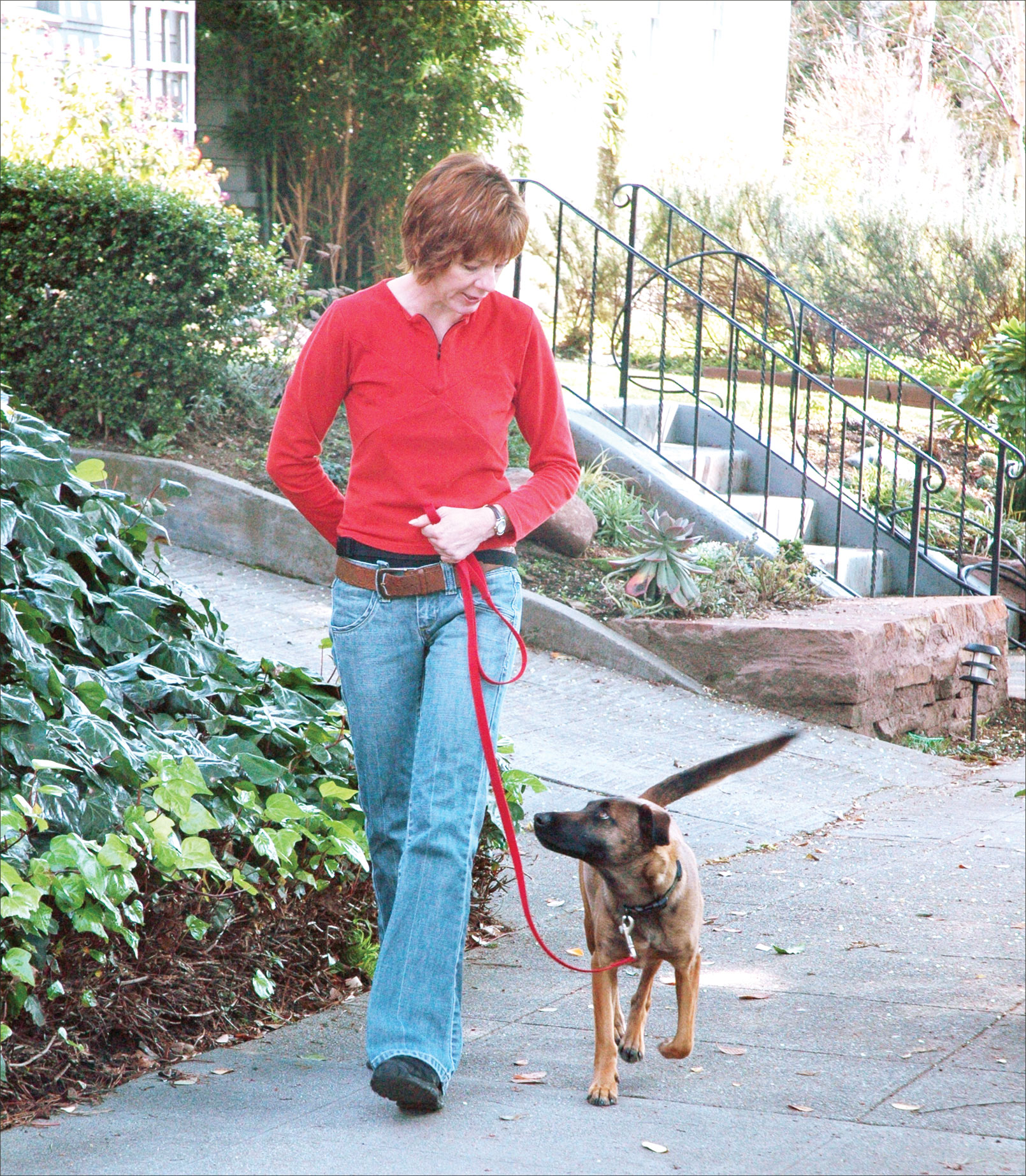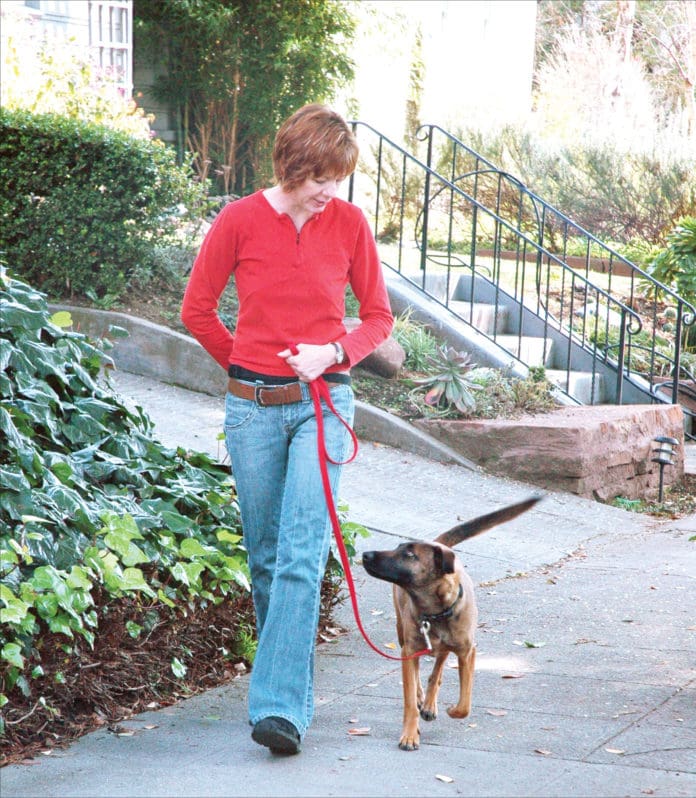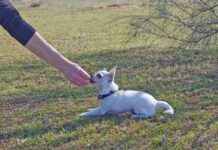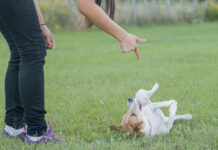1. No. Headphones. Ever. A walker’s attention should always be on the dog and the surroundings.

2. No talking on cell phones except in an emergency.
3. Practice makes perfect. Ask for (and reinforce) your dog for loose-leash walking, and polite sits at street corners and when you stop to talk to someone.
4. Use good equipment that is appropriate for your dog (for example, if not well trained, giant dogs probably need more than a flat collar – and retractable leashes are not considered safe, ever). Inspect the fit and condition of all your equipment frequently. Ensure that your dog wears a tag with current information.
5. Pay attention to your dog’s body language. Chances are she will alert you about anything amiss on the street or trail long before you become aware of it. Whether that’s another dog walker approaching, a mountain biker flying down the trail toward you, or a mountain lion trailing you, an early warning can help you manage the situation – but if only you are paying attention.
6. Carry really good treats. Professionally trained walkers know that good training is built with top-shelf reinforcements.
7. Make sure your dog is healthy before starting any exercise program.
8. Do not let your dog run off-leash unless he has a reliable recall. (The only exception would be in a fenced dog park, during off-peak hours, so you could work on your dog’s recall!)
9. Manage your dog’s behavior! Don’t assume that it is okay for your dog to interact with every dog and every human you come across. Not only is it rude, but it can also trigger unexpected, and maybe unwanted, reactions.







I love you doing training. I only have 2 problems. He pulls when on leash and I am disabled,the other him eating poop. I have invisible fence, I have him trained to come with clicker or call him. I want to thank midmichigan rescue. I got him from you, when he was a years,he’s 11 now. Denise was who I got him from His name is Noah.